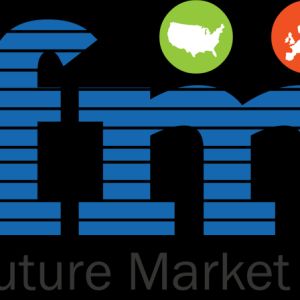Dental Bone Graft and Substitutes Market Globally Expected to Drive GrowthPosted by Pareesh on March 28th, 2018 Increasing medical tourism is expected to aid in growth of the global dental bone graft and substitutes market over the forecast period Advancements in bone graft substitutes has provided better alternative to bone grafts for patients, however, high cost has limited its adoption among price sensitive customers. Developed regions such as North America and Europe have presence of innovative product manufacturers in this product space. However, the costs of the products as well as the procedural costs for in the hospitals in these regions are comparatively higher than that in the emerging economies such as India, China, and Brazil which may prove to be primary driving factor for growth in this market. According to OrthoStreams, orthopedic surgeries in China and other emerging economies is 75% cheaper as compared to that of the procedures performed in the U.S. Hospitals in emerging economies have access to advanced technologies and skilled surgeons to perform the procedure with same level of precision as that in developed countries. Costs associated with any surgical procedures are lower in emerging economies such as India as overall cheaper costs for everything associated with such procedures depending on complexity of the surgeries. Furthermore, hospitals use locally manufactured graft and graft substitutes for bone grafting procedures that provide equivalent levels of performance to that of the globally available commercial bone graft substitutes. According to International Journal of Pharmaceutical Sciences Review and Research, 2015, dental surgeries cost three to four times more in developed regions than in India. Thus, a large patient pool migrates to India so as to avail bone grafting procedures, leading to growth of the dental bone graft and substitutes market in Asia Pacific. To understand Research Methodology, please click: https://www.coherentmarketinsights.com/insight/request-sample/1187 The global dental bone graft and substitutes market was valued at US$ 418.4 million in 2016 and is expected to witness a robust CAGR of 9.1% over the forecast period (2017–2025).
Development of novel bone graft substitutes is expected to boost growth of the dental bone graft and substitutes market The global bone graft and substitutes market is expected to witness a significant growth over the forecast period, owing to adoption of new technologies by manufacturers for development of innovative and novel bone graft substitutes. Alternative bone graft to autografts such as allografts are gaining popularity. This is owing to requirement of single incision for implantation of allograft, whereas, autograft requires two incisions. This reduces the surgery time and hence is increasingly being adopted. Increasing demand for allografts, xenografts, and various other synthetic bone grafts due to their wide availability and advantages such as high stability and low chances of infection at site, is a factor expected to compliment the market growth. For instance, increasing use of hydroxyapatite in bone grafts due to advantages such as high stability, integrity, and less chances of infection is aiding in market growth. Synthetic materials facilitating improved handling are preferred in most bone grafting procedures. Synthetic bone grafts are beneficial, owing to high availability as well as reducing risks of injuries to the donor site. Development of novel bone graft substitutes such as i-FACTOR and increasing application of these substitutes in dental procedures is expected to support in the market growth. Thus, biotechnology-based products that do not interfere with the natural growth process are expected to gain rampant traction over the forecast period. Ask for customization: https://www.coherentmarketinsights.com/insight/request-customization/1187 Dental bone grafts are used as fillers or scaffolds that facilitate bone formation and helps in the wound healing and are suitable for a variety of clinical procedures such as filling of sockets, preservation of ridge volume (also referred to as ridge preservation), and osteogenesis i.e., the formation of new bones. Dental bone grafts are bioresorbable and are not reactive to antigen-antibody. Bone grafts are capable of restoring functionality without intervening aesthetic appearance and can be placed at different locations in the buccal cavity for several indications such as to refill a local bony effect as a result of infection or trauma, and to refill a peri-implant defect caused due to peri-implantitis. Dental bone grafts may be autogenous, allogenous, and xenogenous, whereas, effective alternatives such as synthetic bone grafts are also available. These include demineralized bone matrix, hydroxyapatite, and collagen based matrices, which provide various advantages over dental bone grafts. For instance, ReproBone bone graft substitute, which offers sterility, integrity, and improved stability at the surgical site. Commercially available dental bone grafts and substitutes include Grafton DBM, MinerOss, and NovaBone among others. The risks associated with surgery failure and graft failure can act as a potential barrier for people to maintain faith in the success rate of these devices. According to Dental-Implants-01, the dental bone graft failure rates range from 5-10% on an average, as a result of infections and improper stabilization of the grafts. Thus, the failure of implantation can cause a threat to growth of the global dental bone graft and substitutes market About Coherent Market Insights: Coherent Market Insights is a prominent market research and consulting firm offering action-ready syndicated research reports, custom market analysis, consulting services, and competitive analysis through various recommendations related to emerging market trends, technologies, and potential absolute dollar opportunity. Contact Us: Mr. Shah Like it? Share it!More by this author |


